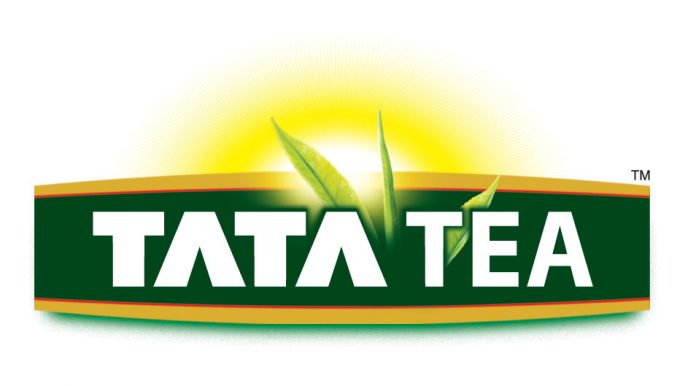
This article has been written by Prashastha Cormaty, pursuing the Diploma in M&A, Institutional Finance, and Investment Laws (PE and VC transactions) from LawSikho.
Table of Contents
Introduction
The acquisition of Tetley Tea by Tata Tea was the David and Goliath story of the financial world and created quite the buzz in the 2000s. The transaction was initiated in February 2000 and the sale of Tetley Tea took place on March, 10th 2000. This acquisition deal would go down in history as one which saw the acquisition of a “global shark by an Indian minnow”. This was no exaggeration as indeed that was the case. The deal cost Tata $ 450 million (271 million pounds) to acquire Tetley when its net worth stood at a puny $114 million. Adding to the sensationalism of this deal was the fact that this was the first acquisition made by an Indian company using the technique of a leveraged buyout.
Tata Tea started off as Tata Finlay Limited where it began operations as a joint venture with another company in Glasgow, UK named Finlay and Company. By making strategic moves whilst ensuring that there was constant growth Tata bought out Finlay’s stake in the venture and renamed itself Tata Tea Limited.
Tetley initially was a business commenced by 2 brothers, Joseph and Edward Tetley before it grew and turned into what it was at the time of acquisition when investors purchased the business from the company, Allied Domecq.
What was the motivation for the acquisition?
The acquisition did not require Tata to persuade Tetley for acquisition. The global scenario was such that both sides recognized the need for the consolidation of resources. It was recognized that African countries were becoming potential formidable competitors by virtue of their increasing production speeds, with the quality of the final product being alarmingly similar to that of the Indian tea. The demand and supply of the product were being affected. Regular consumers of tea produced in India like Russia and tea produced in the UK like Ireland had reduced their consumption which led to a steady decline. Supply was more than demand which led to a decrease in prices. Though India ranked at the top in terms of tea consumption, the diverse variants of tea being offered internationally impacted the prices of tea globally, a factor that was beyond the control of anyone tea production company.
As for Tata specifically, it recognized changing trends in the tea business well in advance and made strategic moves throughout the 1990s with its most impactful move taking place in 2000.
The acquisition would result in an increase in revenues as the joint revenue of both the companies would be considerably high. Tata had a great amount of raw material by virtue of its tea gardens and Tetley had sales expertise on an international level. There would be an expansion of market share as the entity born out of this acquisition would have excellent vertical integration. There were a lot of benefits for both parties involved. 
The deal
The deal was quite different as instead of a cash transaction which was the norm during that period of time, Tata utilized the option of a leveraged buyout. A leveraged buyout is a means of acquisition where the target company is acquired using capital the break-up of which reveals that the debt in that amount is significantly higher than the equity.
A special purpose vehicle (SPV) was set up which was a complete subsidiary of Tata with very little equity capital. The SPV paid off the debt which was undertaken through cash flows of Tetley (the target company). Tetley’s assets were used as security for the debt. Once the debt was paid off, the SPV merged with Tata Tea.
The capital of the SPV included 2 parts, the equity which was 70 million pounds, and the debt which stood at 235 million pounds, and equity. The equity was completely financed by Tata Tea out of which, Tata Tea Inc, Tata’s company incorporated in the US supplied 10 million pounds, and 60 million pounds was supplied by Tata Tea. Out of the 60 million, 45 million pounds were raised through GDRs. The debt was spread over four tranches with a repayment period which ranged from 7 to 9.5 years. The lenders of the debt were Schroders (10 million pounds), Rado Bank (185 million pounds), Mezzanine (10 million pounds), and Intermediate Capital Group (30 million pounds). The total amount raised was spent on three major expenses. 271 million pounds was spent on the transaction, 9 million pounds was spent on legal and bank charges and 25 million pounds was assigned to be the working capital of Tetley.
The usage of the SPV vehicle through a leveraged buyout was greatly beneficial to Tata. Just by virtue of its nature, a leveraged buyout had more advantages compared to a cash transaction. It further reduced the acquirer’s cash expenses for the purchase. As companies are separate entities the liability of Tata was limited to the stake held by it in the SPV.
The aftermath of the acquisition
The aftermath of the acquisition was not as pleasant as anticipated. There were many hurdles to be overcome before the realization of synergies, which was the objective all along took place.
One of the biggest obstacles faced was cultural differences. The skills of the employees of the two companies vary. The risk tolerance of Indian managers was perceived to be quite less compared to that of Tetley’s managers. The question of whether British employees would be willing to work with Indian managers given that India was occupied by the British 50 years ago was also a pertinent question. The financial integration of the companies posed formidable challenges as the debt levels of both companies varied.
The results of the unsuccessful acquisition were evident through the performance of the company. Tata Tea had to infuse more capital to tackle the debt. The cash flows which were originally thought to be the primary contributor to extinguish debt were not performing as expected. In order to help with the integration, Boston Consulting Group was hired. The idea behind the move was that “the consultants would map out a blueprint to help with logistics and marketing plans that keep both identities intact.”
The integration was proposed to be done in three phases. The first phase would entail the preparation of a strategy for the amalgamation of resources and to obtain the benefit of synergies that were based on a common vision and goals. The second phase saw the execution of the plan which was prepared during the first phase. The third phase consisted of the legal merger taking place.
For the execution of the plan which proposed this phased approach, four teams that comprised both the companies’ members were set up. The objectives of each team were very specific and unambiguously laid out. The realization of the objectives laid down was monitored by an executive committee and the teams.
Conclusion
Though the acquisition of Tetley Tea by Tata was not a rosy process, through proper identification and analysis Tata ensured that its investment was not wasted. This acquisition by Tata was indeed a bold move as was described by Ratan Tata himself.
This move by Tata emboldened other Indian companies to make deals that would strengthen and expand their operations and market share irrespective of whether or not such a deal was ever made previously. It also encouraged countries to pursue new methods of carrying out activities like acquisitions.
This deal was an absolute win for Tata as its competitors such as Hindustan Lever Ltd. also pursued such acquisitions and if Tata had not gone ahead with this transaction it would have had a lot to lose. The deal further helped Tata as it helped to shape its image as a trailblazer, which in turn contributed to its goodwill. This helped Tata infuse more confidence in its investors. Such infusion of confidence has certain monetary benefits as well. Tata Tea Ltd.’s market share had increased in the stock market and had mostly all positive variations in the stock exchange. This acquisition transformed Tata from being a small player to becoming a significantly greater international player who now had access to international markets and had a global impact.
The Tata group had the necessary vision to understand what Anand Mahindra meant when he said that, “you are not safe at home unless you are globally competitive” and set out to do so with regard to most of the businesses owned by them and was quite successful at it towards the end of each deal if not so at the beginning itself.
Reference
- Andrea Goldstein, The Internationalization of Indian Companies: The Case of Tata, Nomura Foundation, https://www.nomurafoundation.or.jp/en/wordpress/wp-content/uploads/2014/09/20071113-14_Andrea_Goldstein.pdf.
Students of Lawsikho courses regularly produce writing assignments and work on practical exercises as a part of their coursework and develop themselves in real-life practical skills.
LawSikho has created a telegram group for exchanging legal knowledge, referrals, and various opportunities. You can click on this link and join:











